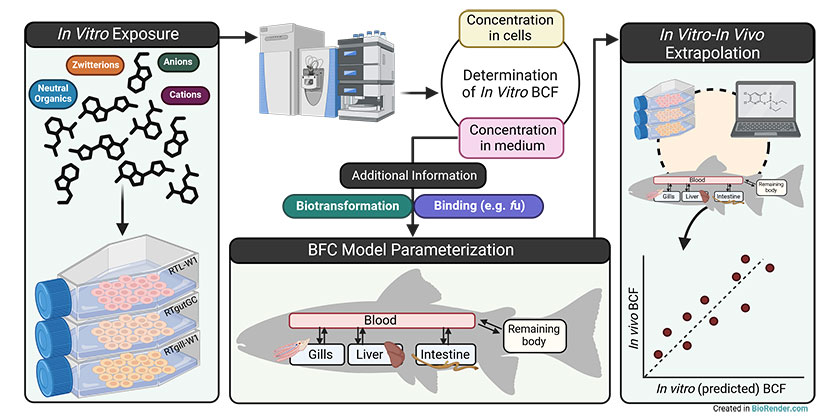Department Environmental Toxicology
In vitro prediction of bioconcentration and bioaccumulation of organic chemicals in fish

The potential of chemicals to accumulate within an organism is one of the most important properties evaluated during environmental risk assessments (ERAs). Bioaccumulation occurs when uptake processes outcompete biotransformation and subsequent elimination processes. While bioaccumulation is conventionally assessed using resource-intensive animal experiments using fish (e.g. OECD 305), we aim to develop and implement cell-based systems to predict bioaccumulation at the in vivo level. For this purpose, we measure chemical uptake and biotransformation rates in, primarily, permanent cell lines from the rainbow trout (Oncorhynchus mykiss) isolated from the liver (RTL-W1), the intestine (RTgutGC), and the gills (RTgill-W1) as to account for both hepatic and extrahepatic biotransformation. We are working to further explore the ability of cells to display processes that influence bioaccumulation (e.g. biotransformation pathways) and to enhance the applicability of our cell-based systems to evaluate a wide range of chemicals, including those with technically challenging physicochemical properties, such as ionizability, high volatility, and hydrophobicity. We also work to advance Physiologically Based Toxicokinetic (PBTK) modelling to accurately extrapolate bioaccumulation at the cellular level (in vitro) to the whole organism (in vivo).
